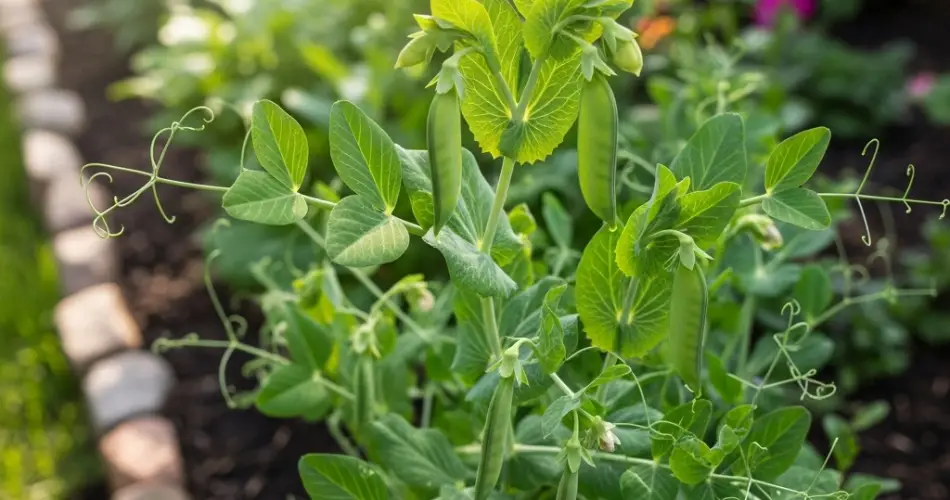Peas are among the most rewarding crops for home gardeners. Their crisp texture, sweet flavor, and ease of growth make them a staple in spring and fall gardens. However, one common issue with peas is their relatively short harvest window—often just a few weeks. Fortunately, with a few smart strategies, you can extend your pea harvest and enjoy fresh pods over a longer period.
Here’s a practical guide to help you keep your peas productive and flavorful throughout the season.
1. Choose the Right Varieties
Not all peas grow and mature at the same rate. Selecting a mix of early-, mid-, and late-season varieties will help stagger harvest times naturally.
Types of peas to consider:
-
Snap peas – Sweet and crunchy, with edible pods.
-
Snow peas – Flat, tender pods harvested before peas inside mature.
-
Shelling peas (garden peas) – Grown for their sweet interior peas; pods are discarded.
Staggered maturity examples:
-
‘Sugar Ann’ (early snap pea) – Matures in about 52 days.
-
‘Cascadia’ (mid-season snap pea) – Ready in 60–65 days.
-
‘Green Arrow’ (late shelling pea) – Takes 70+ days to mature.
Planting a combination of these helps ensure continuous production over several weeks.
2. Succession Planting
One of the easiest and most effective ways to extend the pea harvest is through succession planting—sowing new seeds every 10–14 days during the planting season.
How to do it:
-
Begin planting as soon as soil temperatures reach 45°F (7°C) in early spring.
-
Continue planting every 10–14 days for 4–6 weeks.
-
Stop when temperatures begin to consistently rise above 75°F (24°C), as heat can cause peas to stop flowering or become bitter.
Succession planting ensures that while one crop is finishing, another is just beginning to produce.
3. Use Shade to Protect Against Heat
Peas prefer cool weather and can struggle once the heat of late spring or early summer sets in. By offering some afternoon shade, you can protect plants and encourage continued flowering.
Tips for shading peas:
-
Plant taller crops like corn, sunflowers, or tomatoes nearby to provide natural shade.
-
Use shade cloth or floating row covers during the hottest part of the day.
-
Choose a location that gets morning sun and afternoon shade.
Protecting peas from heat stress helps delay bolting and pod decline.
4. Keep Plants Well-Watered and Mulched
Consistent moisture is key to healthy pea production. Drought or irregular watering can reduce flower and pod production or cause pods to become tough.
Moisture tips:
-
Water regularly, keeping soil evenly moist (but not soggy).
-
Use mulch (such as straw, dried leaves, or compost) around the base of the plants to retain moisture and regulate soil temperature.
-
Water at the base to avoid wetting foliage, which can lead to mildew.
Healthy, hydrated plants produce longer and more abundantly.
5. Provide Support for Climbing Varieties
Many pea types, especially sugar snap and shelling peas, benefit from vertical support. Trellising not only helps save space but also promotes air circulation and easier harvesting.
Support options:
-
String trellis
-
Garden netting
-
Bamboo teepees
-
Wire fencing
Keeping vines off the ground reduces the risk of disease and helps pods develop evenly.
6. Harvest Frequently and Correctly
The more you harvest peas, the more they produce. Allowing pods to mature too much or remain on the plant too long signals the plant to slow or stop pod production.
Harvesting tips:
-
Pick pods every 1–2 days once they begin to mature.
-
Use two hands—one to hold the vine and one to pick the pod—to avoid damaging the plant.
-
For shelling peas, wait until pods are plump and slightly glossy.
-
For snap and snow peas, harvest while pods are still tender and before seeds swell too much.
Regular harvesting encourages the plant to keep producing.
7. Replant in Late Summer for a Fall Harvest
In many regions, peas can be grown again in late summer for a fall harvest. This second planting takes advantage of cooler autumn temperatures that peas love.
Fall planting tips:
-
Plant 8–10 weeks before your area’s first expected frost.
-
Choose fast-maturing varieties (under 60 days) to beat the cold.
-
Prepare the soil well after summer crops are removed, and add compost to boost nutrients.
-
Water consistently during germination and growth, especially during hot days.
A fall crop gives you a second round of tender, sweet peas before winter sets in.
8. Protect Against Pests and Disease
Healthy plants produce longer, so it’s essential to watch for signs of pests or disease that could shorten your harvest.
Common problems to watch for:
-
Aphids – Spray off with water or use neem oil.
-
Powdery mildew – Improve air circulation and avoid wetting leaves.
-
Birds – Use netting to protect seedlings and young shoots.
Tackling issues early ensures your plants continue to thrive.
Conclusion
Extending your pea harvest is all about timing, variety selection, and plant care. By choosing different types, planting in succession, offering some shade, and maintaining healthy conditions, you can enjoy fresh peas for many weeks rather than just a short burst. With a little planning and regular attention, your garden can provide you with a steady supply of sweet, crunchy pods throughout the growing season.



